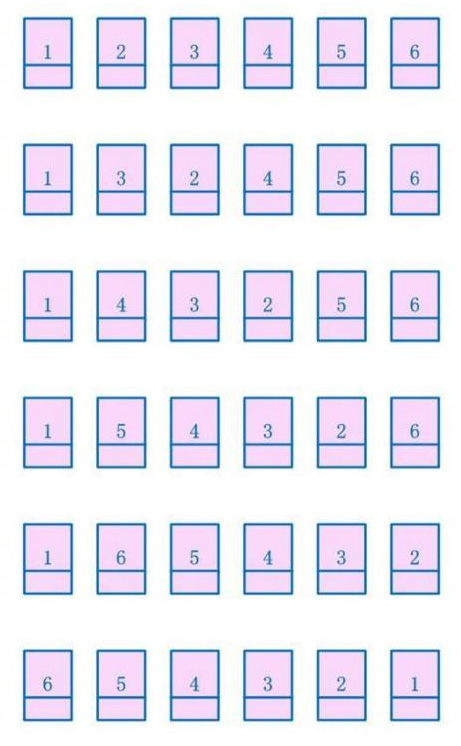如何把一个单链表进行反转?
方法1:将单链表储存为数组,然后按照数组的索引逆序进行反转。
方法2:使用3个指针遍历单链表,逐个链接点进行反转。
方法3:从第2个节点到第N个节点,依次逐节点插入到第1个节点(head节点)之后,最后将第一个节点挪到新表的表尾。
方法4: 递归(相信我们都熟悉的一点是,对于树的大部分问题,基本可以考虑用递归来解决。但是我们不太熟悉的一点是,对于单链表的一些问题,也可以使用递归。可以认为单链表是一颗永远只有左(右)子树的树,因此可以考虑用递归来解决。或者说,因为单链表本身的结构也有自相似的特点,所以可以考虑用递归来解决)
方法1:
浪费空间。
方法2:
使用p和q两个指针配合工作,使得两个节点间的指向反向,同时用r记录剩下的链表。
p = head;
q = head->next;

head->next = NULL;

现在进入循环体,这是第一次循环。
r = q->next;
q->next = p;

p = q;
q =r;

第二次循环。
r = q->next

q->next = p;

p = q;

q = r

第三次循环。。。。。
具体代码如下
ActList* ReverseList2(ActList* head)
{
//ActList* temp=new ActList;
if(NULL==head|| NULL==head->next) return head; //少于两个节点没有反转的必要。
ActList* p;
ActList* q;
ActList* r;
p = head;
q = head->next;
head->next = NULL; //旧的头指针是新的尾指针,next需要指向NULL
while(q){
r = q->next; //先保留下一个step要处理的指针
q->next = p; //然后p q交替工作进行反向
p = q;
q = r;
}
head=p; // 最后q必然指向NULL,所以返回了p作为新的头指针
return head;
}
updated 2014-01-24,重新非IDE环境写了一遍
如果觉得上面的先成环再断环的过程不太好理解,那么可以考虑下面这个办法,增加一个中间变量,使用三个变量来实现。
struct ListNode{
int val;
ListNode* next;
ListNode(int a):val(a),next(NULL){}
};
ListNode* reverseLinkedList3(ListNode* head){
if(head==NULL||head->next==NULL)
return head;
ListNode* p=head; //指向head
ListNode* r=head->next; //指向待搬运的节点,即依次指向从第2个节点到最后一个节点的所有节点
ListNode* m=NULL; //充当搬运工作用的节点
ListNode* tail=head->next;
while(r!=NULL){ //bug2 循环语句写错了, while写成了if
m=r;
r=r->next;
m->next=p->next;
p->next=m;
//if(r!=NULL)
//std::cout<<"m="<<m->val<<" ,p="<<p->val<<" ,r="<<r->val<<std::endl;
//else
//std::cout<<"m="<<m->val<<" ,p="<<p->val<<" ,r=NULL"<<std::endl;
}
head=p->next;
tail->next=p;
p->next=NULL;
tail=p;
return head; // bug1 忘记了return
}
方法3
还是先看图,

从图上观察,方法是:对于一条链表,从第2个节点到第N个节点,依次逐节点插入到第1个节点(head节点)之后,(N-1)次这样的操作结束之后将第1个节点挪到新表的表尾即可。
代码如下:
ActList* ReverseList3(ActList* head)
{
ActList* p;
ActList* q;
p=head->next;
while(p->next!=NULL){
q=p->next;
p->next=q->next;
q->next=head->next;
head->next=q;
}
p->next=head;//相当于成环
head=p->next->next;//新head变为原head的next
p->next->next=NULL;//断掉环
return head;
}
附:
完整的链表创建,显示,反转代码:
//创建:用q指向当前链表的最后一个节点;用p指向即将插入的新节点。
//反向:用p和q反转工作,r记录链表中剩下的还未反转的部分。
#include "stdafx.h"
#include <iostream>
using namespace std;
struct ActList
{
char ActName[20];
char Director[20];
int Mtime;
ActList *next;
};
ActList* head;
ActList* Create()
{//start of CREATE()
ActList* p=NULL;
ActList* q=NULL;
head=NULL;
int Time;
cout<<"Please input the length of the movie."<<endl;
cin>>Time;
while(Time!=0){
p=new ActList;
//类似表达: TreeNode* node = new TreeNode;//Noice that [new] should be written out.
p->Mtime=Time;
cout<<"Please input the name of the movie."<<endl;
cin>>p->ActName;
cout<<"Please input the Director of the movie."<<endl;
cin>>p->Director;
if(head==NULL)
{
head=p;
}
else
{
q->next=p;
}
q=p;
cout<<"Please input the length of the movie."<<endl;
cin>>Time;
}
if(head!=NULL)
q->next=NULL;
return head;
}//end of CREATE()
void DisplayList(ActList* head)
{//start of display
cout<<"show the list of programs."<<endl;
while(head!=NULL)
{
cout<<head->Mtime<<"\t"<<head->ActName<<"\t"<<head->Director<<"\t"<<endl;
head=head->next;
}
}//end of display
ActList* ReverseList2(ActList* head)
{
//ActList* temp=new ActList;
if(NULL==head|| NULL==head->next) return head;
ActList* p;
ActList* q;
ActList* r;
p = head;
q = head->next;
head->next = NULL;
while(q){
r = q->next; //
q->next = p;
p = q; //
q = r; //
}
head=p;
return head;
}
ActList* ReverseList3(ActList* head)
{
ActList* p;
ActList* q;
p=head->next;
while(p->next!=NULL){
q=p->next;
p->next=q->next;
q->next=head->next;
head->next=q;
}
p->next=head;//相当于成环
head=p->next->next;//新head变为原head的next
p->next->next=NULL;//断掉环
return head;
}
int main(int argc, char* argv[])
{
// DisplayList(Create());
// DisplayList(ReverseList2(Create()));
DisplayList(ReverseList3(Create()));
return 0;
}
方法4: 递归
updated: 2014-01-24
因为发现大部分问题都可以从递归角度想想,所以这道题目也从递归角度想了想。
现在需要把A->B->C->D进行反转,
可以先假设B->C->D已经反转好,已经成为了D->C->B,那么接下来要做的事情就是将D->C->B看成一个整体,让这个整体的next指向A,所以问题转化了反转B->C->D。那么,
可以先假设C->D已经反转好,已经成为了D->C,那么接下来要做的事情就是将D->C看成一个整体,让这个整体的next指向B,所以问题转化了反转C->D。那么,
可以先假设D(其实是D->NULL)已经反转好,已经成为了D(其实是head->D),那么接下来要做的事情就是将D(其实是head->D)看成一个整体,让这个整体的next指向C,所以问题转化了反转D。
上面这个过程就是递归的过程,这其中最麻烦的问题是,如果保留新链表的head指针呢?想到了两个办法。
// 递归版的第一种实现,借助类的成员变量m_phead来表示新链表的头指针。
struct ListNode{
int val;
ListNode* next;
ListNode(int a):val(a),next(NULL){}
};
class Solution{
ListNode* reverseLinkedList4(ListNode* head){ //输入: 旧链表的头指针
if(head==NULL)
return NULL;
if(head->next==NULL){
m_phead=head;
return head;
}
ListNode* new_tail=reverseLinkedList4(head->next);
new_tail->next=head;
head->next=NULL;
return head; //输出: 新链表的尾指针
}
ListNode* m_phead=NULL;//member variable defined for reverseLinkedList4(ListNode* head)
};
第二个办法是,增加一个引用型参数 new_head,它用来保存新链表的头指针。
struct ListNode{
int val;
ListNode* next;
ListNode(int a):val(a),next(NULL){}
};
class Solution{
ListNode* reverseLinkedList5(ListNode* head, ListNode* & new_head){ //输入参数head为旧链表的头指针。new_head为新链表的头指针。
if(head==NULL)
return NULL;
if(head->next==NULL){
new_head=head; //当处理到了旧链表的尾指针,也就是新链表的头指针时,对new_head进行赋值。因为是引用型参数,所以在接下来调用中new_head的值逐层传递下去。
return head;
}
ListNode* new_tail=reverseLinkedList5(head->next,new_head);
new_tail->next=head;
head->next=NULL;
return head; //输出参数head为新链表的尾指针。
}
};
总结
以上就是这篇文章的全部内容了,希望本文的内容对大家的学习或者工作具有一定的参考学习价值,如果有疑问大家可以留言交流,谢谢大家对自由互联的支持。
